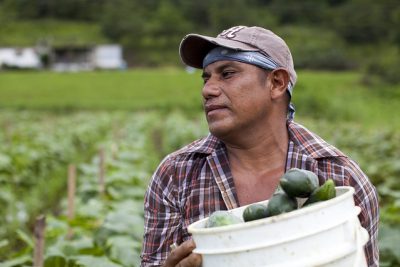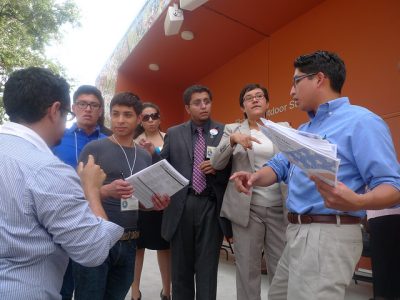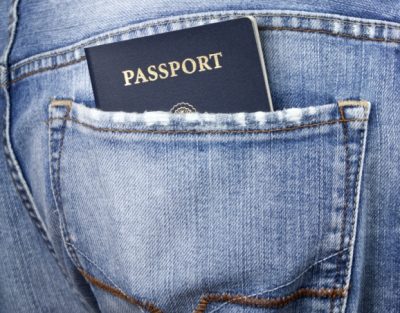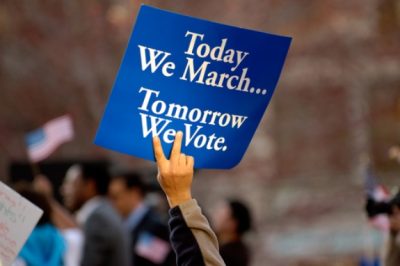Integration

Agriculture Industry Harmed by Restrictive State Immigration Laws
The American agricultural industry is facing billions of dollars in losses due to labor shortages resulting from recent anti-immigrant laws passed in various states around the country. The American farming industry is heavily dependent on undocumented workers, and according to a recent article in Time Magazine, has had an extremely difficult time replacing those who have fled as a result of laws like Arizona’s SB 1070 or Alabama’s HB 56. Read More

No Paid Sick Days for Immigrant Caregivers Risky to Workers, U.S. Economy
By Elisa Batista, Women Immigrants Fellow, New America Media. In 91-year-old Elda Frank’s apartment is a scenario that plays out every moment of every day. An immigrant caregiver with no paid sick days scrambles for backup when she becomes ill on the job. In caregiver Paula Osorio’s case, she called Frank’s son, Bruce, and offered to send her partner, Roberto, in her place. Read More

Citizenship Day 2012: Realizing the Potential of the Immigrant Vote
For many aspiring immigrants, achieving citizenship means full participation in civic life—and that means the right to vote. Every year, thousands of immigrants become naturalized U.S. citizens and exercise their new right. In the 2010 national elections, naturalized citizens comprised 6.4% of all voters. The voter registration rate among immigrants as a whole has risen since 2000. Just as importantly, a growing number of U.S.-born children of immigrants are now coming of age and becoming voters. However, the full potential of the immigrant vote has not been reached. There are more than eight million legal immigrants in the United States who are eligible to naturalize but have not yet done so. The latent electoral power of these voters-in-waiting is enormous. In many parts of the country their votes could potentially swing elections. As described in a series of Immigration Impact blog posts by Rob Paral, there are numerous counties across the country where the number of Legal Permanent Residents (LPRs) who have arrived since 1985 exceeds the margin of victory in the Obama-McCain election. Moreover, the voter rolls of many counties would grow dramatically if LPRs who are eligible to naturalize actually did so and registered to vote. Although this could not happen in time for the 2012 election cycle, it could make a difference in future elections. In many U.S. counties, the number of Legal Permanent Residents (LPRs) who have arrived since 1985 exceeds the Obama-McCain margin of victory. Read More

Immigrant Integration is a Two-Way Street
The process by which immigrants integrate into the economic and social fabric of the United States is very much a two-way street. Naturally, immigrants must harbor the desire to climb the socioeconomic ladder of success. But there must be a ladder for them to climb. If the community within which immigrants live and work makes the collective decision to deprive them of opportunities, then their upward mobility is hindered—to the social and economic detriment of the entire community. Yet, if the community actually welcomes newcomers and helps to facilitate their upward mobility, then the community eventually reaps the rewards of having workers and neighbors who are more highly skilled, more integrated, and more heavily invested in the community itself. Read More

What Early DACA Application Numbers Tell Us About the Future of the Program
It hasn’t even been a month since the United States Citizenship and Immigration Services (USCIS) first started accepting requests for deferred action under its Deferred Action for Childhood Arrivals (DACA) initiative, yet the New York Times reported this week that the first approvals are already on their way. The Times also reported that the agency has received 72,000 applications as of September 11—almost double the 40,000 reported in the Wall Street Journal just the day before. That’s not bad at all for a program that was only announced three months ago and put into place by the government in 60 days. Read More

The Economic Advantages of U.S. Citizenship
Becoming a naturalized U.S. citizen has many benefits – citizens can vote and run for public office, bring family members to the U.S., hold certain jobs reserved for citizens, and they are protected from deportation. There are also a range of economic benefits to citizenship, highlighted by the Migration Policy Institute (MPI) in their new report, The Economic Value of Citizenship for Immigrants in the United States. Read More

Nativist Group Trivializes the 2012 Latino Vote
The nativist Center for Immigration Studies (CIS) has an implicit message for the Republican Party heading into the 2012 elections: stop worrying about Latino voters and just play to your predominantly Anglo base. Such is the kamikaze message contained within a new CIS report, innocuously titled Projecting the 2012 Hispanic Vote. The report dismisses the claims of innumerable analysts that Latino voters could tip the electoral balance one way or the other in the so-called “battleground” states and, by extension, in the nation as a whole. After all, argues CIS, veterans and senior citizens outnumber Latinos in the national electorate, so why not focus on winning them over instead? This may seem comical to some observers, but CIS is saying it with a straight face. Read More

New Americans Represent Team USA at the London Olympics
Today, the 2012 Olympics formally kick off in London where the best athletes from around the world are meeting to compete. The United States is well-represented, not only by our native born-athletes but by many “New Americans.” In fact, approximately 38 of those competing on Team USA are naturalized U.S. citizens. These athletes remind us that Americans come from all over the world. Read More

California DREAMers Exhibit High Levels of Civic Participation, Yet Face Significant Hardships
By Caitlin Patler, Ph.D. Candidate in Sociology, UCLA There are roughly 5 million undocumented children and young adults currently living in the U.S. today, 24% (or 1.1 million) of whom live in California. As in other states, California’s undocumented youth face a unique and challenging paradox. On one hand, they work hard, excel academically, participate in their communities and have high educational and career aspirations in the only country they’ve ever known. On the other hand, their immigration status severely limits their opportunities, aspirations and ability to contribute fully to U.S. society. A new research brief, co-authored by Veronica Terriquez and this author, highlights the experiences of undocumented youth in California—many of whom disproportionally experience economic and personal hardships. Read More

Today We Celebrate Immigrant Men and Women Keeping the American Dream Alive
Countless Americans will celebrate America’s 236th birthday today by joining friends and family for food and fireworks. Many will just enjoy the day, others will recall our Founding Fathers’ declaration of independence, and others will raise their right hand, swear an oath of allegiance, and become citizens of the United States of America. Across the country today, men and women from every corner of the globe will stand side by side and swear to “support and defend the Constitution and laws of the United States of America,” and reminding each and everyone one of us of the power and promise of the American Dream. Read More
Make a contribution
Make a direct impact on the lives of immigrants.
